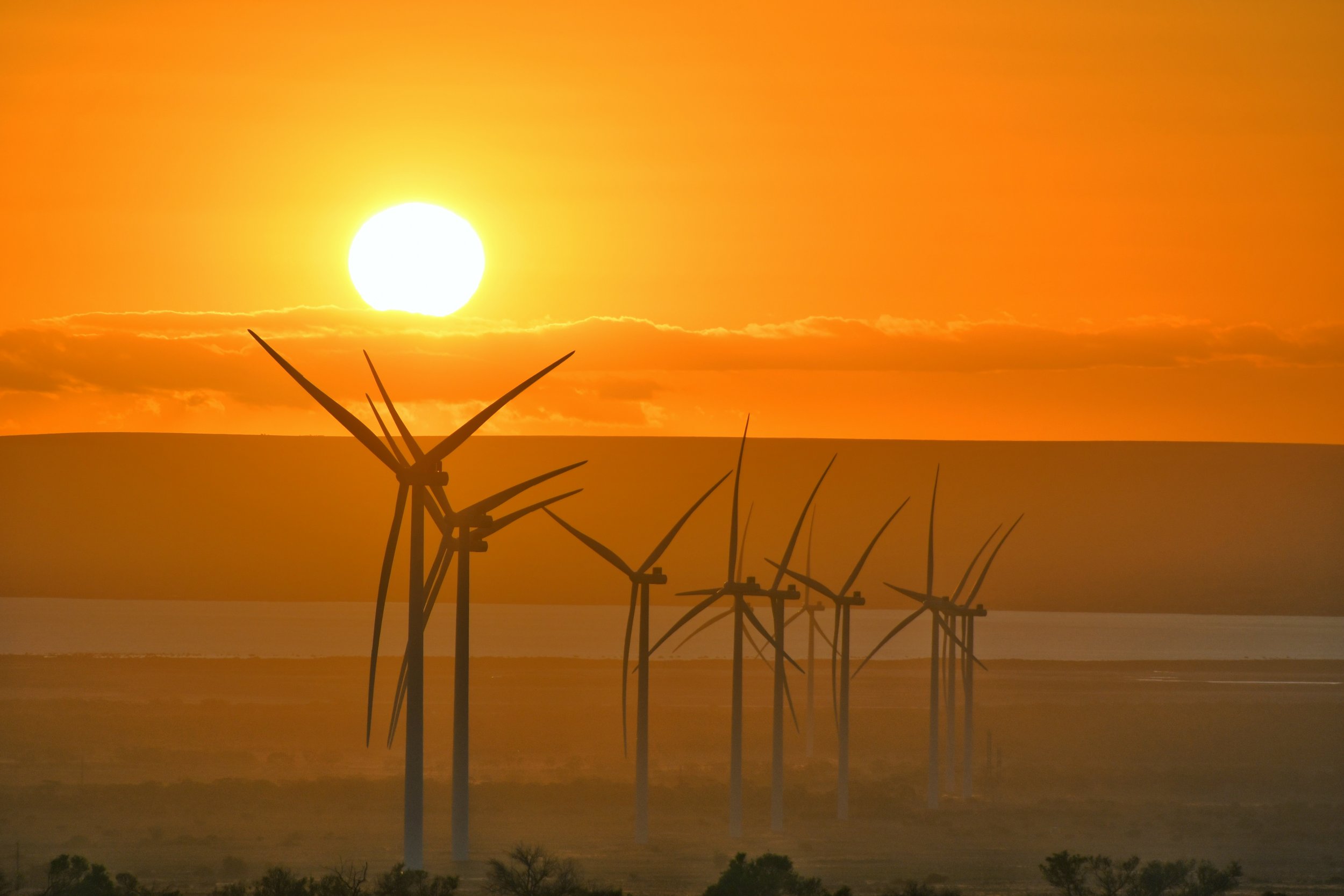Photo courtesy of John Morton via Flicker
The rise of wind energy in Texas is partly due to favorable weather conditions and infrastructure.
By Sarah Grinnell ’26
Staff Writer
According to a new report by Climate Central, the amount of clean energy produced by the U.S. skyrocketed in 2022, with wind and solar producing enough energy to power “the equivalent of 64 million average American households.” Among the largest renewable energy producers of this dramatic increase are California, Florida, Iowa, Oklahoma and Texas.
Due to heightened renewable energy development in states such as these, The Guardian states that “national wind and solar capacity grew 16 percent compared to 2021.” This statistic will become increasingly important as the Biden administration moves forward with its billion-dollar renewable energy projects promised as part of the commitment to decarbonize the grid by 2030 and reach net zero emissions by 2050. The Climate Central report explained that California produced the most solar energy and Texas produced the most wind power in 2022. The report suggests that if current production trends stay on track, the U.S. could potentially produce enough electricity from sunlight and wind to reach that 2050 goal.
California’s sunny weather makes it well-suited to the transition to clean energy, The Los Angeles Times reported. During one weekend in 2021, the state was powered by 95 percent renewable energy. However, renewable power is largely dependent on shifting environmental conditions, so these peaks in renewable energy can be short-lived. On hot summer nights, California has repeatedly encountered blackouts, The Los Angeles Times reported. Furthermore, California still simultaneously burns natural gas and exports electricity to its border states, a factor that is not accounted for in state-level calculations of renewable energy use.
Texas’ leadership in wind production may come as a surprise given that it is a red — or Republican-voting — state, and as OilPrice.com points out, many conservative local and federal level Republicans are notorious for opposing climate spending. Despite this, the state has been a leader in renewable energy since last year, installing 7,352 megawatts of new wind and solar capacity. In comparison, California only installed 2,697 megawatts of energy storage projects.
The Guardian shows that Texas’ performance makes sense given the regional context of the state. Irfan Khan, assistant professor of electrical and computer engineering at Texas A&M, said to The Guardian, “Texas is rich in wind speed and rich in sun.” This means that while the initial investment in renewable energy is costly, the weather conditions in Texas make wind a cheap energy source once the infrastructure is implemented.
Texas’ deregulation of its energy market has also advanced the amount of land able to be leased for wind turbines, The Guardian explained, as “only two percent of the land in Texas is regulated by the federal government.”
Texas has also constructed transmission lines directly linked to businesses and homes to more efficiently connect wind farms to the grid. According to The Guardian, this is a major obstacle that many states face in the implementation of renewable energy, as most wind and solar farms are in rural areas and thus require transmission lines to connect them to the central electrical grid. As of 2021, over 8,100 projects in the U.S. were seeking approval for grid connection, which is already at capacity. This “backlog” is one of the leading delays for the switch to clean energy, The Guardian stressed.
Another obstacle that keeps states from following the examples of Texas and California is the vast amount of misinformation regarding renewables, NPR explained. According to NPR, common misconceptions about wind turbines’ noise levels, their supposed lack of effect on reducing carbon emissions and stories of the low-frequency infrasound of turbine noise supposedly causing health problems or wind turbines breaking, burning and falling have deterred a number of states and legislators from hopping on the trend, despite professionals debunking these concerns. Nonetheless, NPR says that researchers cite misinformation as a leading source of doubts about clean energy which have slowed or derailed a number of renewable projects.
While the Climate Central report shows a promising trend towards more renewable energy, NPR emphasizes that it is important to remember that 60 percent of U.S. electricity still comes from carbon-based sources. Texas, for example, still ranks 10th in the country for fossil fuel consumption, despite its use of renewables.
Therefore, while experts like Climate Central’s senior data analyst, Jennifer Brady, cite the report’s findings as evidence of how “we are moving closer to the goals we need to reach in order to hit net zero,” these statistics, as well as The Guardian and NPR’s emphasis on the structural issues involved in the implementation of renewables, caution that steps still remain to be taken before the U.S. can become completely carbon neutral.

